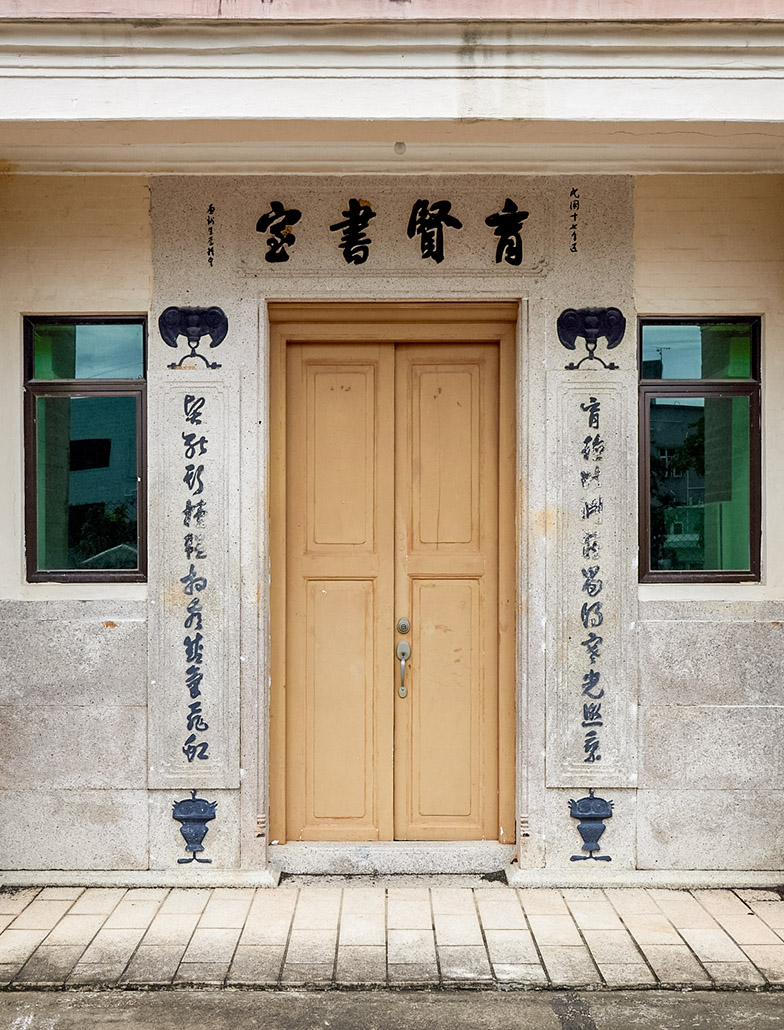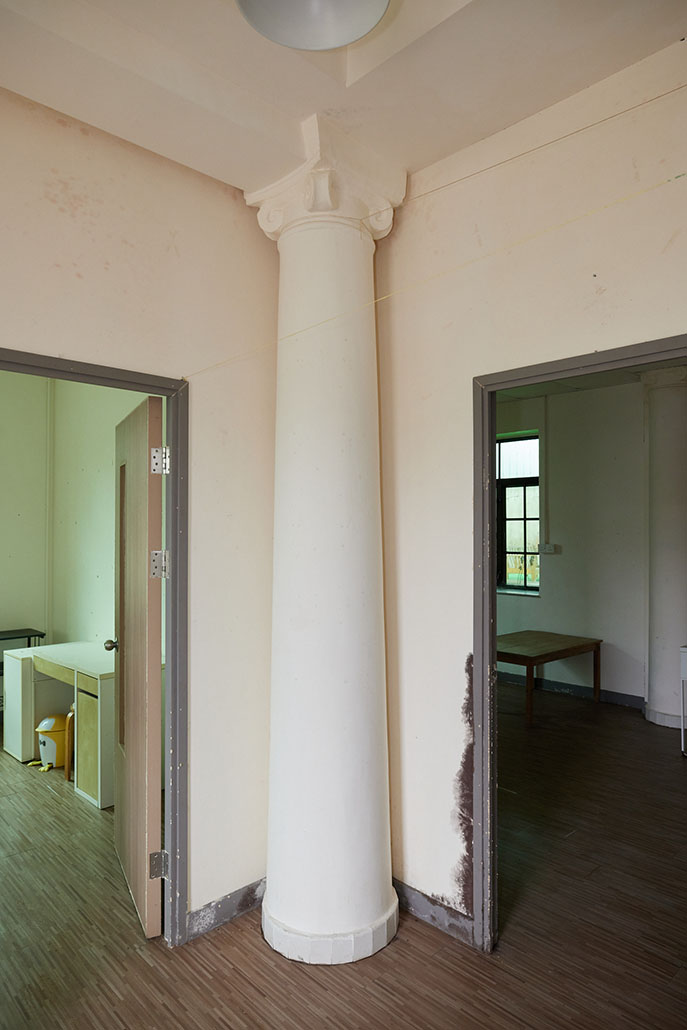Yuk Yin Study Hall in Sha Kok Mei Village, Sai Kung, was built in 1928 with donations from members of the Wei clan and villagers abroad. Before World War II, it housed a Bok Bok Chai study hall. The walls of the study hall are constructed with grey bricks, and it has a forecourt and a backyard. Above the lintel of the main entrance are the words Minguo Shiqinian Jian (built in the seventeenth year of the Republican Era), along with the inscription “1928” on the pediment of the upper part of the exterior wall, indicating the year of construction. The first floor balcony is adorned with Western-style round columns and arches, as well as vase-shaped balustrades, representing a fusion of Chinese and Western architectural features.
After the Japanese forces invaded Hong Kong and extended their occupied territory in South China in 1941, Guangdong People's Anti-Japanese Guerrilla Force consolidated its resistance forces and renamed as Dongjiang Column in December 1943. To strike back at the Japanese army, Hong Kong and Kowloon Brigade of the East River Guerrillas was established in Wong Mo Ying Village, Sai Kung, with Cai Guo-liang as its leader. Most of its members were local residents. The brigade continued its armed resistance against Japan during the Japanese Occupation.
Since Sai Kung was the base camp of the brigade, Yuk Yin Study Hall was transformed from a typical study hall to one of the key secret resistance bases of Hong Kong and Kowloon Brigade of East River Guerrillas to step up surveillance of the Japanese forces and strengthen connections among members of the guerrilla forces. Hong Kong and Kowloon Brigade of the East River Guerrillas was committed to rescuing prominent cultural figures and patriotic democrats who had remained in Hong Kong. It played an important role in Hong Kong’s resistance campaign. The wife of Yu Hanmou, commander of the Seventh Theatre Command in China, stayed briefly in Yuk Yin Study Hall, Sai Kung, before travelling to Shenzhen by sea.
According to the oral history account of Lau Kam-man, the then secretary of the guerrillas in Sai Kung, members of the brigade liked to sing patriotic songs, such as “On Songhua River”, “Eighth Route Army Chorus” and “Dongjiang Column Chorus” in Yuk Yin Study Hall to spread patriotic ideas to the young people and unite the villagers in the resistance campaign. New members were trained to gather intelligence.
Yuk Yin Study Hall bears witness to the invaluable history of the resistance efforts of Hong Kong and Kowloon Brigade of East River Guerrillas. The study hall was seized by Japanese forces for a short time during the Japanese Occupation. It was reopened after Japan's surrender in 1945 and was subsequently converted into Yuk Yin School with the support of government funding. In 1966, Yuk Yin School was amalgamated with four village schools as Sai Kung Central Lee Siu Yam Memorial School and was moved out of the building. From 1971 to 1976, the study hall was used by Sai Kung branch of Chung Yip Middle School. In recent years, it has been used as a community centre for the villagers.
Address:
No. 1A Sha Kok Mei Second Lane, Sai Kung, New Territories.
Not open to the public




